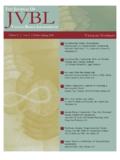Transcription of Take5: Laboratory Values - nursingcenter.com
1 Take5: Laboratory ValuesUse this handy cheat-sheet to help you monitor Laboratory Values related to fluid and electrolyte status. Remember, normal Values may vary according to techniques used in different ELECTROLYTES REFERENCE RANGE NURSING IMPLICATIONS (conventional units)Calcium (Ca2+) mg/dL If a patient has severe hypocalcemia, take seizure precautions and assess the airway; and take safety precautions if confusion is present. Also, monitor for tetany, tingling sensations in the tips of the fingers, around the mouth, and in the feet.
2 Spasms of the muscles of the extremities and face may occur. Monitor for hyperactive deep tendon reflexes as well. Also, be alert for ECG changes including a prolonged QT interval. If a patient has hypercalcemia, increase mobilization as appropriate and encourage sufficient oral intake. Take safety precautions if confusion is present and be alert for signs of digitalis toxicity.
3 Also, monitor the patient s cardiac rate and (Cl-) 97-107 mEq/L Monitor the patient with hypochloremia for muscle spasms, alkalosis, and depressed respirations. Monitor the patient with hyperchloremia for (Mg2+) mEq/L Hypomagnesemia can predispose a patient to digitalis toxicity or cardiac arrhthymias. Take seizure precautions if necessary and monitor for laryngeal stridor.
4 If hypermagnesemia is present, be alert for hypotension and shallow respirations, lethargy, drowsiness, and coma. Don t give magnesium-containing medications to patient with renal failure or compromised renal function. Check deep tendon reflexes (PO4-) mg/dL Patients with severe hypophosphatemia are at greater risk for infection. Administer IV phosphate products cautiously and give total parenteral nutrition cautiously in patients who are malnourished.
5 Monitor for diarrhea when taking oral supplements. A sudden increase in serum phosphate level can cause hypocalcemia. With hyperphosphatemia, monitor for signs of tetany. Soft tissue calcification can be a long-term complication of chronically elevated serum phosphate levels. Page 1 of 4 SERUM ELECTROLYTES REFERENCE RANGE NURSING IMPLICATIONS (conventional units)Potassium (K+) mEq/L Hypokalemia can be life-threatening.
6 For patients taking digoxin, assess for hypokalemia, which potentiates the action of digitalis. Patients with hypokalemia are at risk of cardiac arrhythmias. Monitor patients for muscle cramps and weakness, paresthesias, fatigue, anorexia, decreased bowel motility, and an irregular heartbeat. To prevent hypokalemia, educate patients about abuse of laxatives and diuretics. Follow your facility policy with regards to potassium administration. Hyperkalemia can be life-threatening.
7 Monitor patients for arrhythmias, irritability, paresthesias, and anxiety, as well as GI symptoms such as nausea and intestinal colic. Prevent hyperkalemia by administering potassium correctly, according to the policy of your facility. Also, avoid giving patients with renal insufficiency potassium-saving diuretics, potassium supplements, or salt substitutes. Patients on ACE inhibitors should avoid potassium (Na+) 135-145 mEq/L For patients with hyponatremia, monitor fluid losses and gains, monitor for GI symptoms (anorexia, nausea, vomiting, abdominal cramping) and CNS symptoms (lethargy, confusion, muscle twitching, seizures), and check urine specific gravity.
8 Avoid giving large water supplements to patients receiving isotonic tube feedings. Take seizure precautions when hyponatremia is severe. When hypernatremia is present, monitor fluid losses and gains, and monitor for changes in behavior such as restlessness, lethargy, and disorientation. Look for excessive thirst and elevated body temperature, and check urine specific gravity.
9 Give sufficient water with tube feedings to keep serum Na+ and BUN at normal 2 of 4 RENAL FUNCTION REFERENCE RANGE NURSING IMPLICATIONS (conventional units)Blood urea nitrogen 10-20 mg/100 mL Increased BUN is found with impaired renal function (such as associated (BUN) with shock, heart failure, and salt and water depletion), diabetic ketoacidosis, and burns. Creatinine mg/100 mL Increased creatinine levels can be found with impaired renal function, heart failure, shock, and dehydration. ACID-BASE STATUS REFERENCE RANGE NURSING IMPLICATIONS (arterial blood gas studies) (conventional units)pH Identification of the specific acid base imbalance is important in identifying the underlying cause of the disorder and determining appropriate treatment.
10 A pH less than indicates acidosis and a pH greater than indicates 35-45 mm Hg The PaCO2 is influenced almost entirely by respiratory activity. When the PaCO2 is low, carbonic acid leaves the body in excessive amounts; when the PaCO2 is high, there are excessive amounts of carbonic acid in the 22-26 mEq/L The bicarbonate level of the ABG reflects the bicarbonate level of the body. The kidneys are involved in either reabsorbing bicarbonate or excreting bicarbonate, depending upon what is needed to maintain acid-base 3 of 4 COMPLETE BLOOD REFERENCE RANGE NURSING IMPLICATIONS COUNT (CBC) (conventional units)Hemoglobin Increased hemoglobin levels can be found in hemoconcentration of the Males 13-18 g/dL blood.





